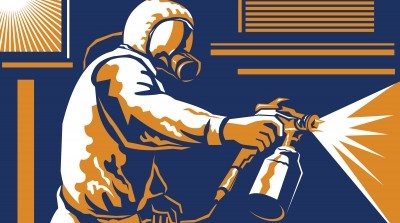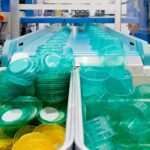New, Durable Self-cleaning Surfaces
Put away the polish! A new paint that creates self-cleaning surfaces has been developed by a research team at University College London (UCL). The coating can be applied to clothes, paper, glass and steel. When combined with adhesives, the paint maintains its self-cleaning properties after being wiped, scratched with a knife, and scuffed with sandpaper.
Self-cleaning surfaces work by being extremely water repellent, but often stop working when damaged or exposed to oil. According to Claire Carmalt, professor of inorganic chemistry at UCL, “The surfaces tend to be mechanically weak and so rub off easily, but by pairing our paint with different adhesives, we’ve shown it is possible to make a robust self-cleaning surface. We used materials that are readily available so our methods can be scaled-up for industrial applications.”
Tough, Versatile Self-cleaning Surfaces
The new paint from UCL creates a more resilient surface that resists everyday wear and tear. The researchers say it could be used for a wide range of real-world purposes from making better protective clothing to scratch-proofing cars. “Being waterproof allows materials to self-clean as water forms marble-shaped droplets that roll over the surface, acting like miniature vacuum cleaners picking up dirt, viruses and bacteria along the way. For this to happen, the surface must be rough and waxy, so we set out to create these conditions on hard and soft surfaces by designing our own paint and combining it with different adhesives to help the surfaces withstand damage,” explains Yao Lu from the UCL Department of Chemistry.
A range of coating methods were used to create the self-cleaning surfaces on the different base materials. Glass and steel were covered using an artist’s spray-gun, cotton wool was dip-coated, and sheets of paper were treated with a syringe. After the coat of paint was applied, all the materials became waterproof as well as self-cleaning, and instead of moistening the surface, water droplets bounced off.
“Our paint worked extremely well for a variety of surfaces in tough conditions which were designed to simulate the wear and tear of materials in the real-world. For example, car paint frequently gets scuffed and scratched and we wanted to make sure our paint would survive that,” Lu says.
The research team continues to work on developing self-cleaning surfaces. Their next goal is to create an antimicrobial coating to help combat infections in hospitals.
The study, involved researchers from UCL, Imperial College London and Dalian University of Technology in China. The results are published in the journal Science.




